Fill form to unlock content
Error - something went wrong!
For EXCLUSIVE GrowCo Updates Fill Out The Info Below!
Thank you!
Uncovering the Years of History That Went Into the Design of the Air Jordan 40
This story appears in SLAM KICKS 28. Available now.
It’s a Wednesday afternoon in Brooklyn and Jordan Brand is keeping everything hush-hush. The only semblance of light in the room radiates from the subtle hits of fire red that shine overhead. Thirty-nine sneakers are lined up in order from the inaugural icon, the Air Jordan I, to last year’s evolution, the Air Jordan XXXIX. One fluorescent light shines alone to reveal an unoccupied space. A secret is lurking, waiting to be unveiled. That’s when Leo Chang, Jordan Brand’s Senior Creative Director of Global Sport, unveils what’s been kept under lock and key, an official look at the Air Jordan 40.
“When the design team came together to start this process on the 40, we felt the gravity of the legacy that was in the other room,” Chang says, as he motions over to the 39 other Air Jordan silhouettes that are lined up in the distance. “And to be able to fill that last spotlight that was empty in there, and the weight of that. And so really, we felt like you got to start with the first thing, which is performance. And that’s what we’re known for. And that’s something that we want to start with…the best-in-class performance.”
Three colorways sit directly behind him, awaiting the world’s vision. “The Classic,” “Dusty Rose” and “Blue Suede” ensembles will kick off an eerily tight run of nine colorways throughout the model’s life cycle.
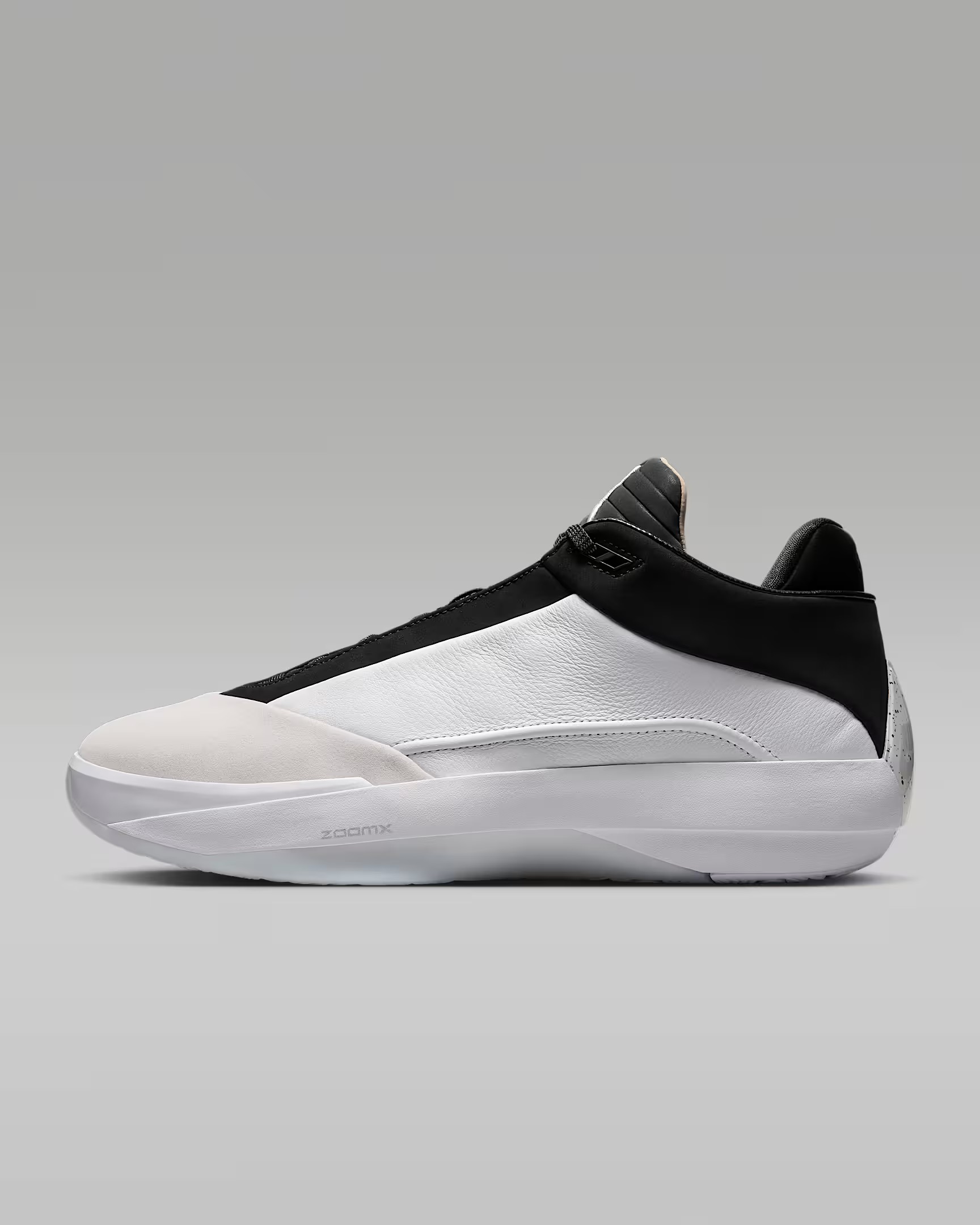
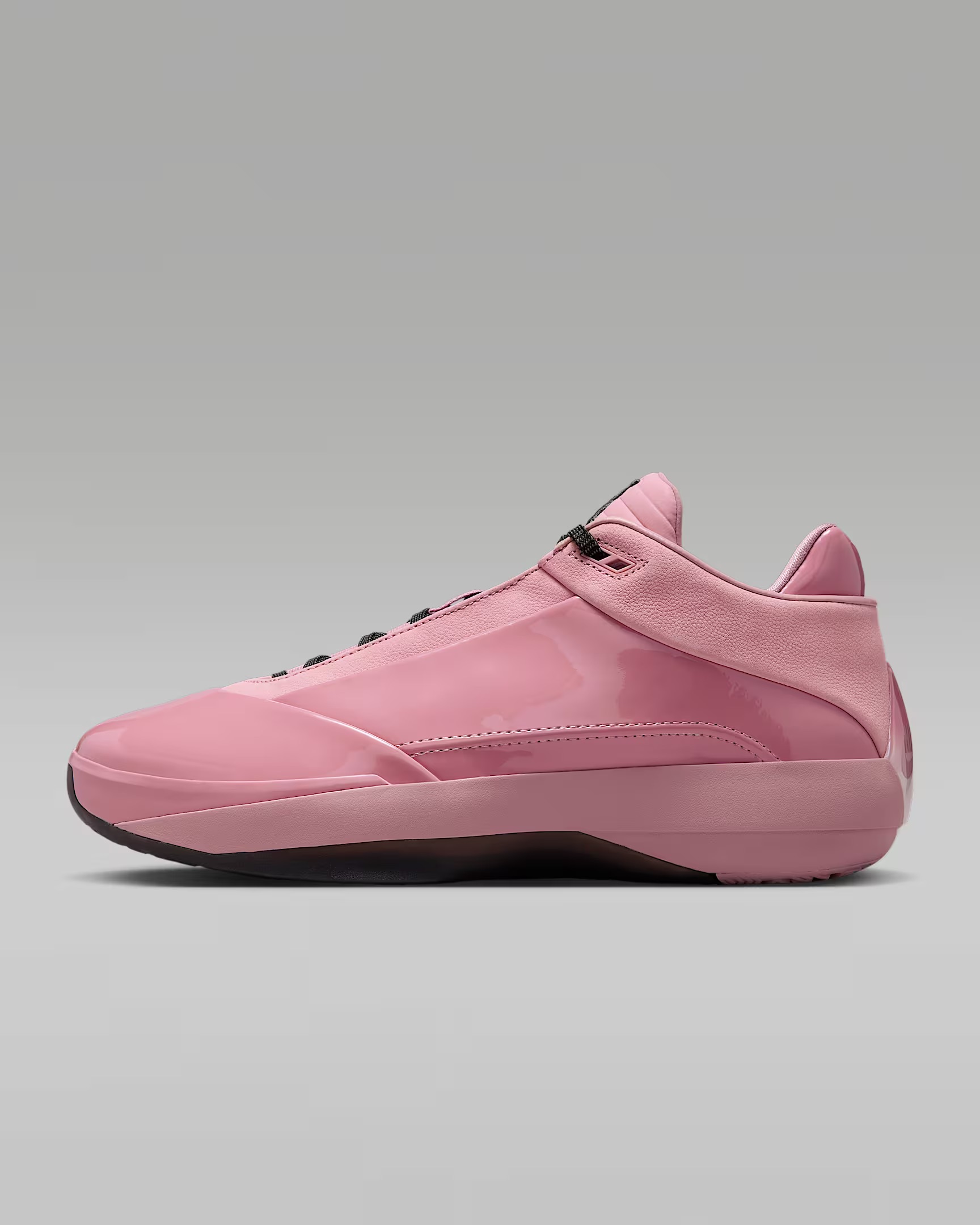
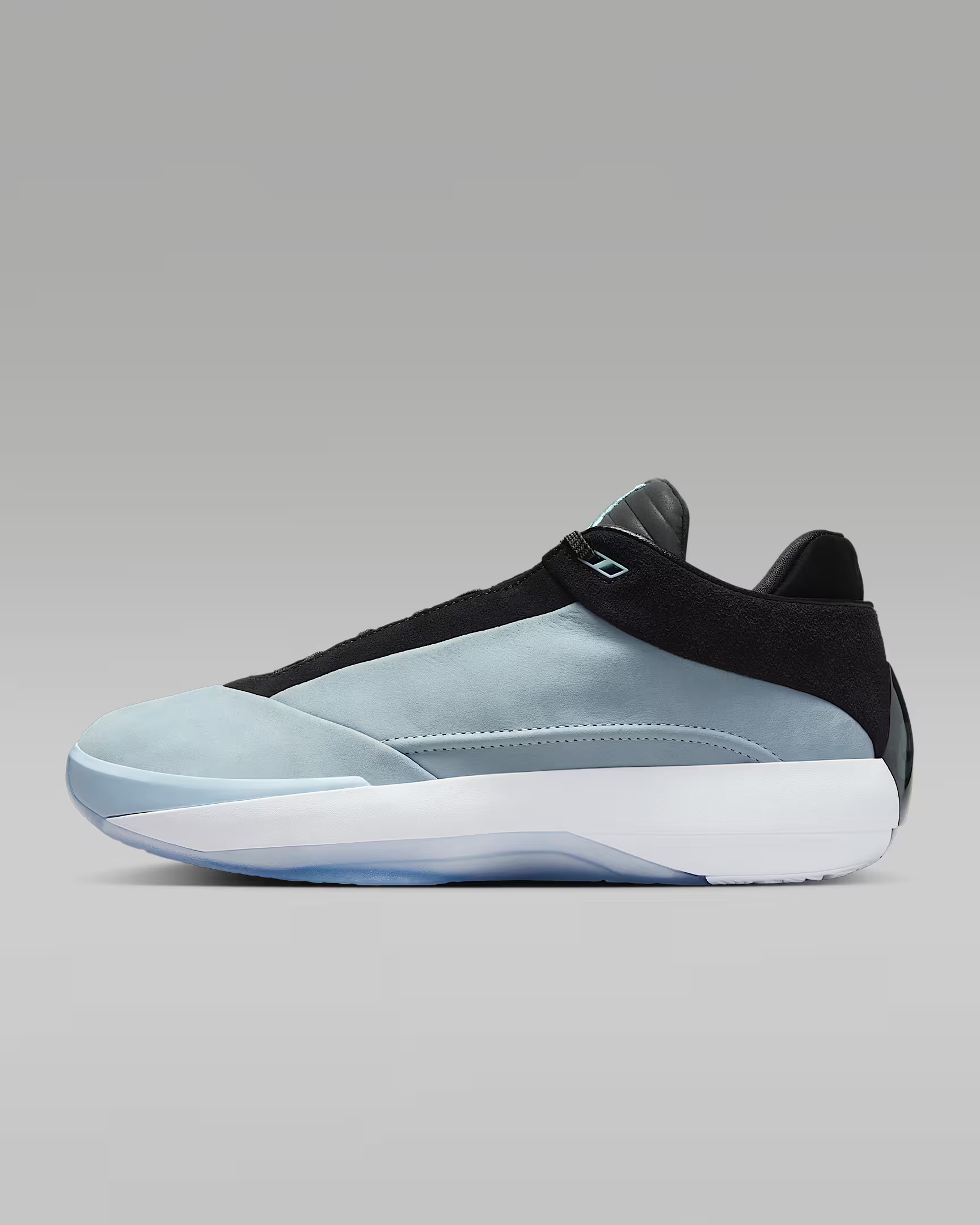
The brand’s flagship game sneaker is partly inspired by a storied legacy that’s four decades in the making, but the Air Jordan 40 is headstrong in heralding the future of footwear by ushering in a new era-defining franchise. One that’s tricked out with all the bells and whistles necessary to remind everyone that this is deeper than the throwbacks.
In 2025, providing the best-in-class tech requires trying stuff that no one in the history of Nike Inc. has attempted. Chang and the Jordan Brand design team have. For the first time ever, two of the most influential cushioning systems to come out of Beaverton—ZoomX and Zoom Strobel—have been fused together into one cohesive unit.
Known to provide ulterior cushioning to marathon runners and racers alike through the VaporFly series, ZoomX foam is mad, mad cushy. Couple that with the brand’s tried-and-true Zoom Strobel and you’ve got a landmark exploration into the foray of unrivaled comfort and instant energy return.
The combination is a striking balance between the right proportions and geometry. But in terms of getting the most out of the construction, Chang and the design team knew they’d need to stitch the Strobel bag as close to the foot as possible. So much so that when you lift up the sock liner for a peek, you’re met with an instant view into the carefully constructed sole unit. The process was one Chang was intimately familiar with after doing the same with the Nike KD 12. And the result isn’t just bouncy, it’s pillowy soft. And beneath that, even more cushion.
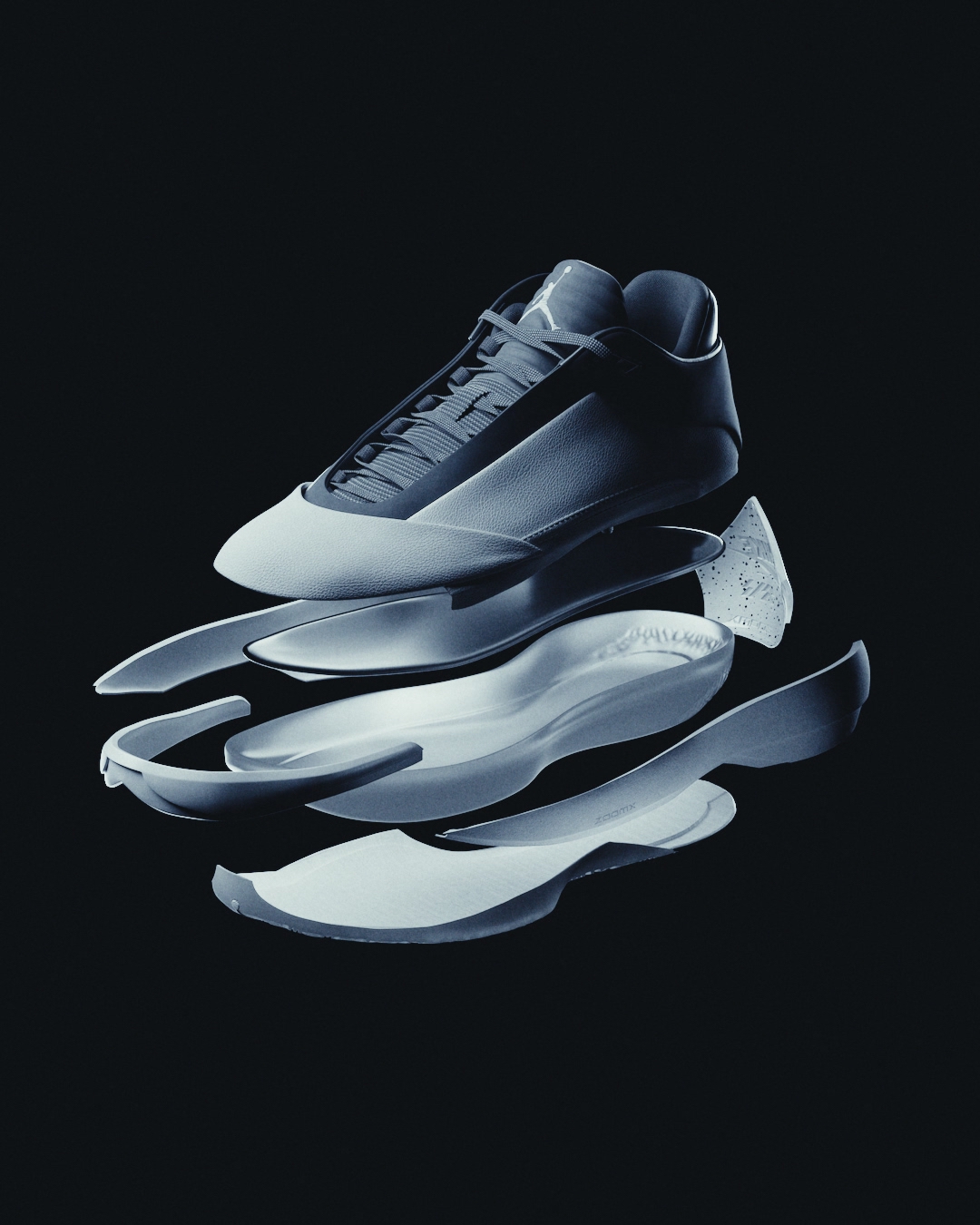
Nike Inc.’s ZoomX system most recently appeared within the Air Jordan XXXIX, but that silhouette featured a slightly different configuration. So when it came time to apply both ZoomX and Strobel within the 40, Chang went through multiple sole unit configurations to solve everything from foot instability on top of the ZoomX system to shaving off as much weight as possible.
As the lightest and softest foam construct in Nike Inc.’s catalog, Chang devised a rubber carrier for the 40’s hallmark innovation to rest in, with sidewalls guarding against roll-offs better than bed rails for toddlers. And then they took a whole two ounces out of the sole unit, dropping the height of where the top line meets the tumbled leather upper (more on that later).
Even the rubber compound used for the outsole is more malleable than Play-Doh. “Every little thing, like, just even segmenting the rubber to take away more weight, is something we did,” he continues. “So yeah, it’s just really obsessing over all those details.”

That obsession has led to one of the most comfortable Air Jordan models in a minute. Trae Young and Paolo Banchero concur.
“For me, I like how I can just put on a shoe and just get right on the court and it feels like it’s been broken in,” Trae says.
“I’ve had the chance to work out in it a couple times so far, and I would say it’s probably the best shoe I’ve put on my feet so far [as a] Jordan shoe,” Paolo adds. “The way it feels on the court, the way I’m able to move kind of effortlessly without having to worry about the grip or anything. I’m really excited.”
The positive vibes underfoot can be traced back to the brand-new traction pattern that the team cooked up. Herringbone is the industry standard, “but we wanted to put our extra little special sauce on it,” Chang says. In one vein, the baseline of the pattern pulls from herringbone ideals. Except there’s a slight skew to every indentation across the outsole, angled exactly to 40 degrees, with segmented portions to mirror the natural flex pattern of the foot.
The 40-degree dimensions reverberate out from heel to toe and conclude with a nod to the Air Jordan XII’s Jumpman logo. And that’s just the beginning of an endless stream of details that Chang and his team packed into the unmistakable design.
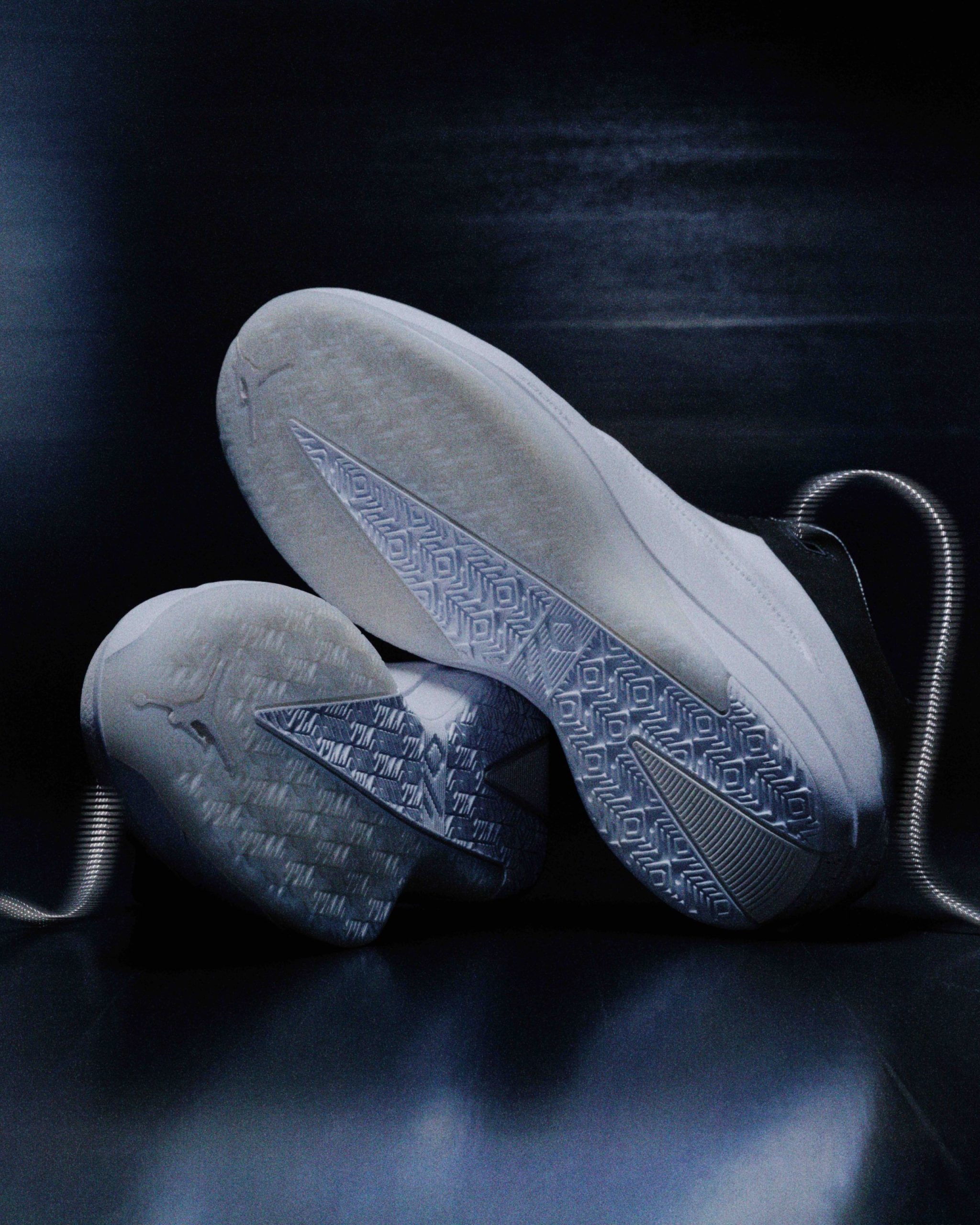
For the past 10 years, each Air Jordan model, from the 31 to the XXXIX, has pulled direct inspiration from the second number in its namesake. The 31s brought in the I’s iconic midfoot Swoosh and the XXXIXs played up the global emblem from the IXs. For the 40, the team wanted to commemorate the designs of the past but with a futurized spin.
Peep that bone stitching right above the sole unit? Straight from the Air Jordan XIV. And the tongue has some major Air Jordan V vibes. Flip the joint around and the diamond-shaped heel clip is instantly recognizable. Shouts to the Air Jordan III.
Look deeper and you’ll find more obscurity. The Air Jordan 2009 pulled up for the occasion, with the formation of the 40’s collar sloping down at a similar angle. The medial midfoot brought out an instant classic, too, spinning its ventilation to look like the Air Jordan 18’s setup. Even the micro-perf pattern that appears within the quarter lining of the Air Jordan 2010 is used for the AJ 40’s inner collar. And that’s just the tip of a very, very detailed iceberg.
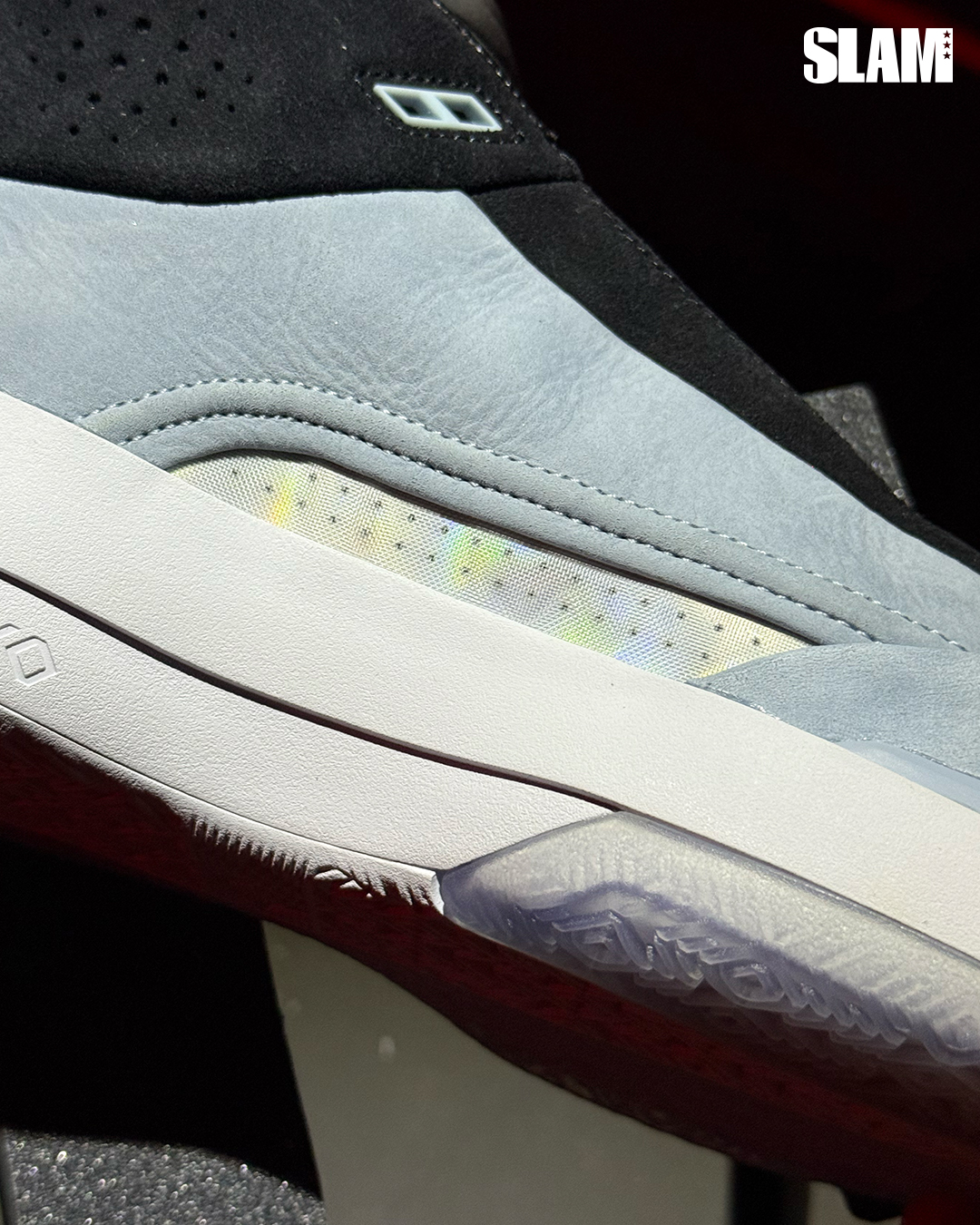
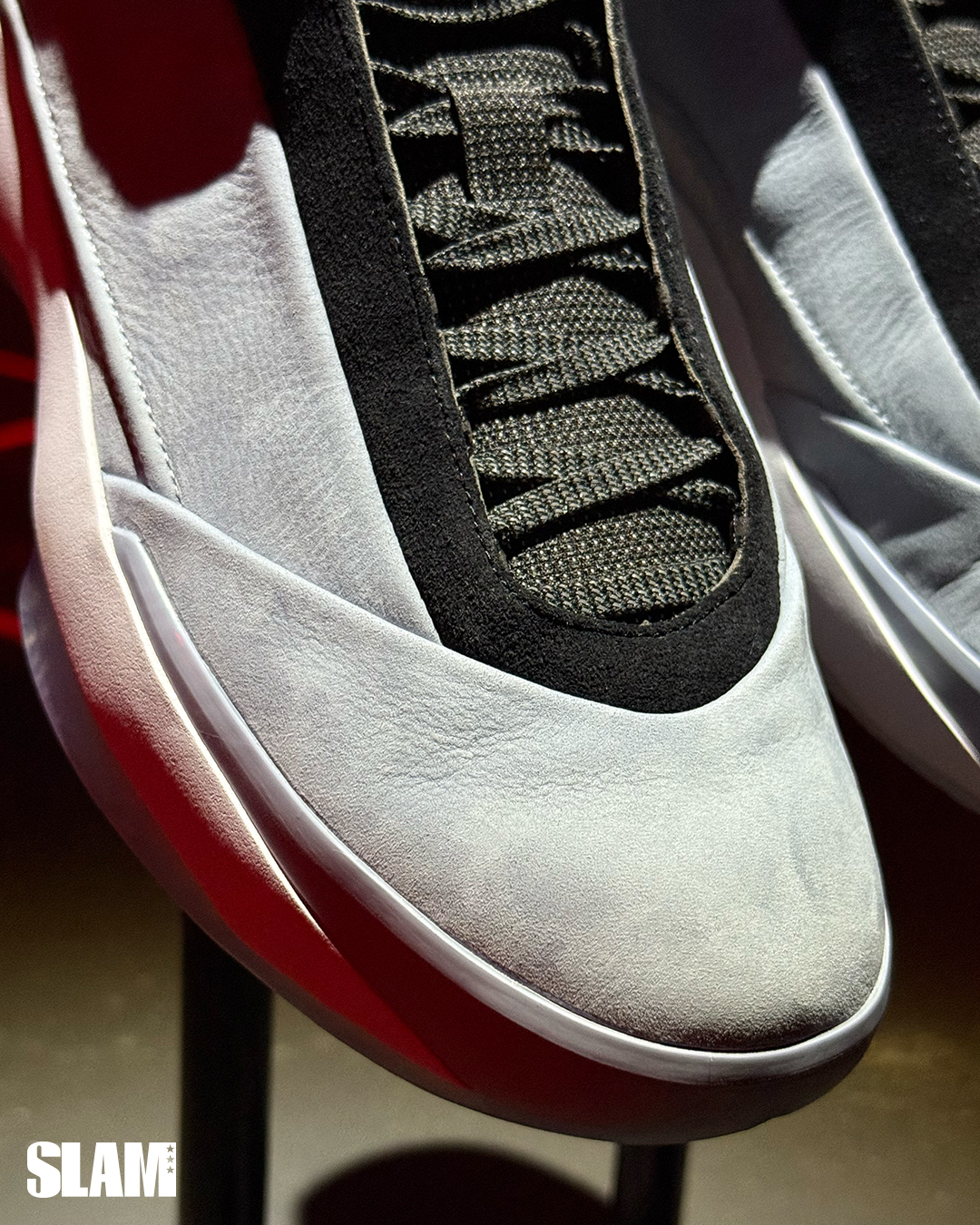
“Everything that was on there was done in an edited way to feel like it was harmonious and not trying to favor necessarily one model versus another. But also taking the opportunity to maybe highlight ones that are more obscure,” Chang says. “They expect a I, II, III, IV, V, XI, you know, they expect a lot. And there are nods to it. Like the toe cap, the patent right there on that [referencing the material used on the ‘Dusty Rose’ colorway]. We wanted to make it fun by bringing in the unexpected.”
With as many call-outs as there are, Chang was conscious to incorporate everything in an organic way. Some things naturally fell off, and naturally some stuck. Everything has a purpose, though. Even the return to the premium textures and materials that Mike once immortalized from the ’80s through the ’90s.
Oh, you thought we were done talking tech just cause we brought up some leather? Think again. Hidden behind a sea of tumbled sidewalls lies a containment system of 360-degree webbing to keep everything locked and loaded. “And then when we look at the style and aesthetics of the shoe, we’re really looking at bringing art design principles to life, which is sculpted minimalism. Products are simple, beautiful and reductive in design,” Chang says of the 40’s design language.
Depending on the colorway, the Air Jordan 40 is set to fully ingratiate itself from the walk to the park to lacing up on the sidelines. It’s an intentionally avant-garde contribution to the slow yet promising rise of hoop sneakers appearing more frequently off the court.
Take “The Classic” for example. It’s exactly that. It’s quintessential Jumpman, from the leather upper panels to the supple nubuck toe cap and interior tongue lining. The “Blue Suede” effort’s upper is buttery smooth, too, while the “Dusty Rose” colorway pairs pebble grain leather with a shimmering patent leather construction.
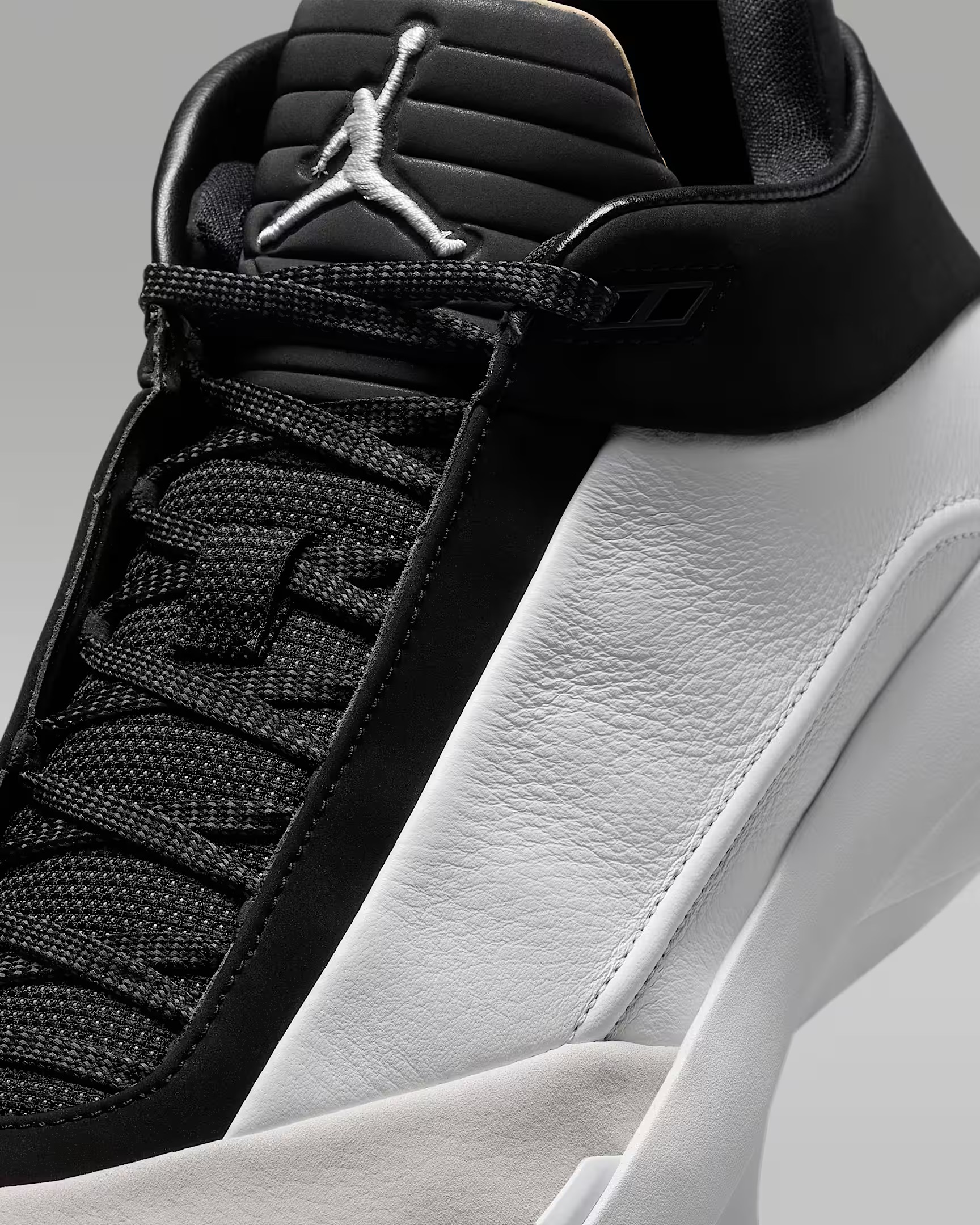
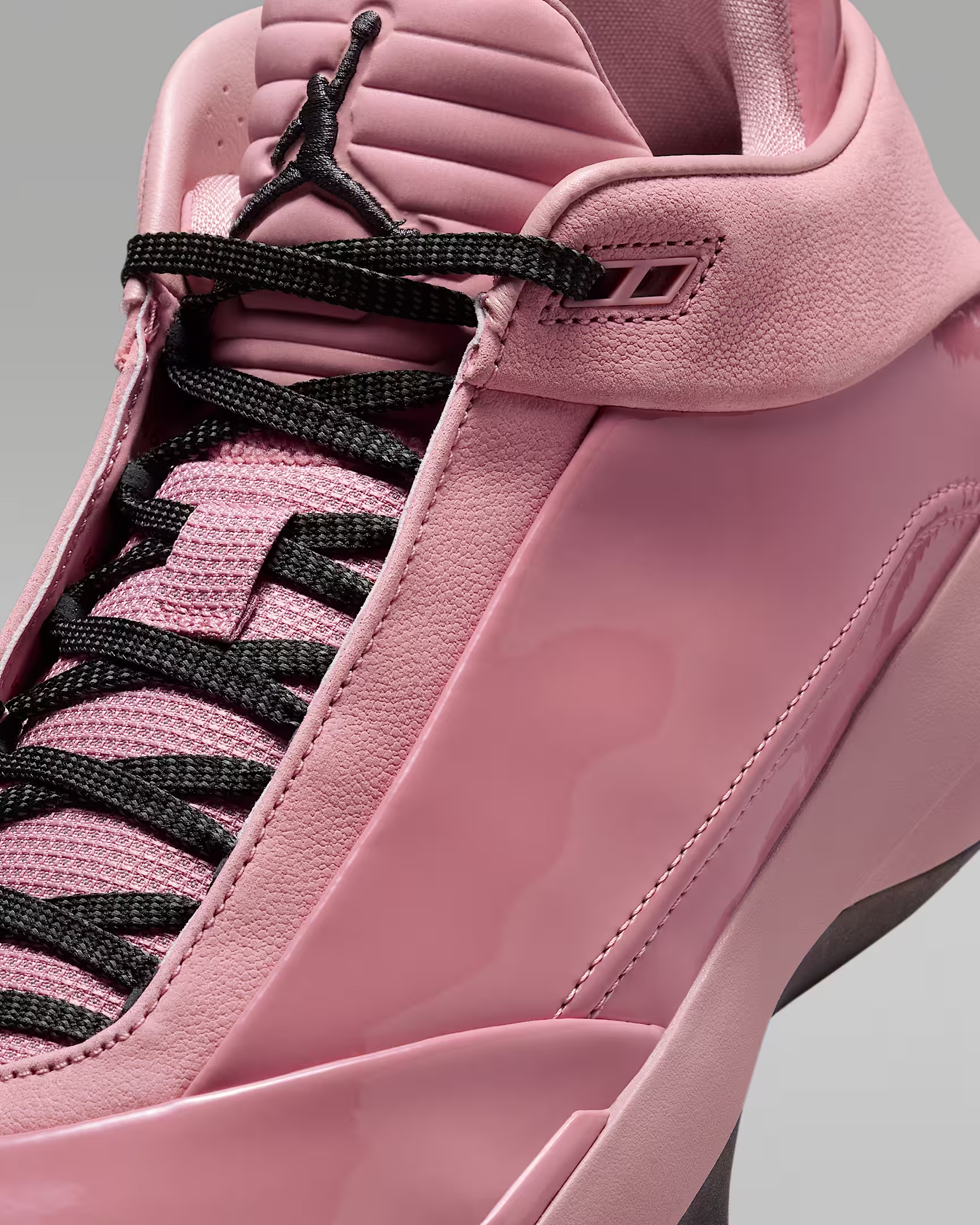
Every execution is intentional. And the outcome is unlike anything Jordan has developed before. Sure, the past 40 years are referenced throughout this latest installment. But this is a whole new chapter.
After lining childhood bedroom walls and occupying space within every creative’s mood board for the past four decades, Jordan Brand isn’t just pushing toward the future, they’re ushering it in. And the Air Jordan 40 is a reminder of all that’s left to be accomplished. Built by a storied legacy. Built for the next generation of greatness. The secret’s out.
Photos via Jordan Brand.
The post Uncovering the Years of History That Went Into the Design of the Air Jordan 40 appeared first on SLAM.